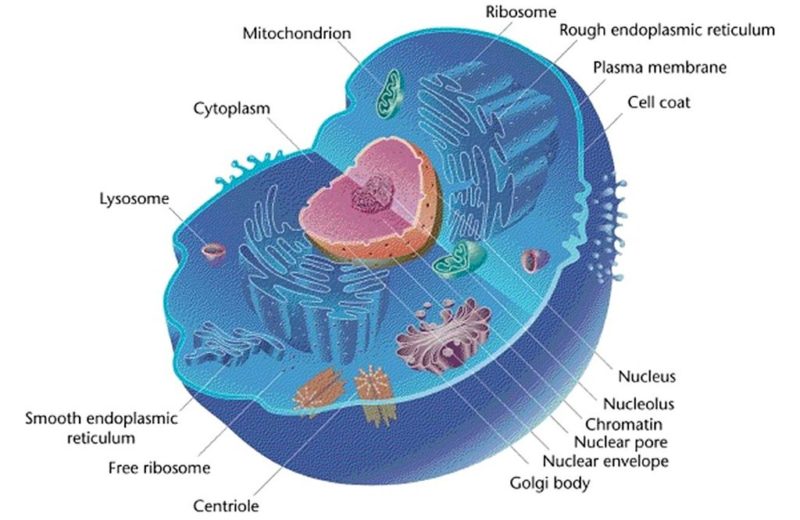What is the difference between cytoplasm and nucleoplasm?
Cytoplasm and nucleoplasm are the main features of the eukaryotic cell. These cell organelles have some close features but tend to be quite different.
The main difference between cytoplasm and nucleoplasm is that cytoplasm is found inside the cell but outside the nucleus, whereas nucleoplasm is found inside the nucleus.
The lesson provides the core difference between cytoplasm and nucleoplasm in a comparison table for easier understanding.
Read More: Difference between Cytoplasm and Protoplasm

What Is Cytoplasm?
The cytoplasm is the fluid mass found inside the cell except for the nucleus. It composes of cell organelles and cytosol.
The cytosol is a gel-like substance enclosed between the cell membrane while cell organelles are membrane-bound internal structures in eukaryotic cells.
The cytoplasm consists of endoplasm and ectoplasm sections. These two sections play a different role in a cell.
Most of the cell metabolic pathway takes place in the cytoplasm and also enhance the flow of components within a cell.
What Is Nucleoplasm?
Nucleoplasm refers to sap found within the nucleus. It is also known as karyoplasm and nucleus sap. The sap is normally enclosed by a double membrane envelope.
The main function of nucleoplasm is to maintain the shape and the structure of the nucleus. It is also a place where chromatins and nucleolus are suspended.
The popular components of nucleoplasm are nucleolus, nucleotides, chromatin, nuclear matrix, and enzymes.
Comparison Chart: Cytoplasm Vs Nucleoplasm
| Basic Terms | Cytoplasm | Nucleoplasm |
| Location | Inside the cell | Inside the nucleus |
| Enclosed by | Cell membrane | Double nuclear envelope |
| Structure | Gelatinous structure | Highly gelatinous structure |
| Suspending | Cell organelles | Nucleolus and chromatin |
| Universality | All type of cells either prokaryotic or eukaryotic | Popular in eukaryotic cells only |
| Cell Division | Split into two cells during cytokinesis | Release during nuclear division and refilled after the formation of the nuclear envelope |
| Components | It contains enzymes, proteins, salts, and minerals. | It contains nucleolus, nucleotides, chromatin, nuclear matrix, and enzymes. |
| Membrane | Plasma membrane | Nuclear membrane |
| Cyclosis | Organelles undergo motion | No motion |
| Core Function | Site for the formation of proteins and ATP | Site for the formation of DNA and RNA |
Core Difference Between Cytoplasm and Nucleoplasm
- The cytoplasm is a general mass of fluid found in the cell except for the nucleus while nucleoplasm is the general mass in the nucleus.
- The cytoplasm is surrounded by a single plasma membrane while nucleoplasm is surrounded by a double nuclear envelope
- The main content of cytoplasm are cell organelles and supporting structures while nucleoplasm are chromatin and nucleolus
- Cytoplasm divided into two cells during cytokinesis while nucleoplasm is released during nuclear division and later refill after the formation of the nuclear envelope
- The cytoplasm is universal in all cells while nucleoplasm is limited in eukaryotic cells
- The cytoplasm is a gelatinous structure while nucleoplasm is a highly gelatinous structure.
Comparison Video
Conclusion
Therefore, the cytoplasm is part of protoplasm which implies that they do not contain chromatins materials which are a presence in the nucleoplasm.
The core difference between cytoplasm and nucleoplasm is the location. Understanding the above differences is quite important.
More Sources and References
- https://www.ncbi.nlm.nih.gov/pmc/articles/PMC2224863/
- https://www.sciencedirect.com/science/article/abs/pii/S0143416097901159